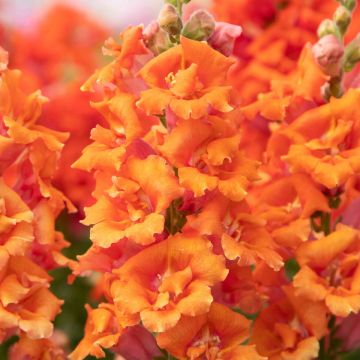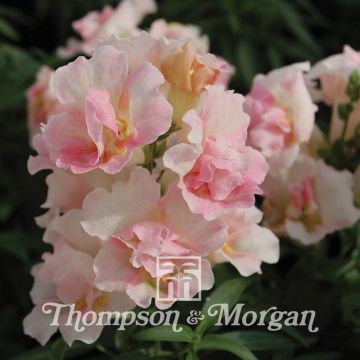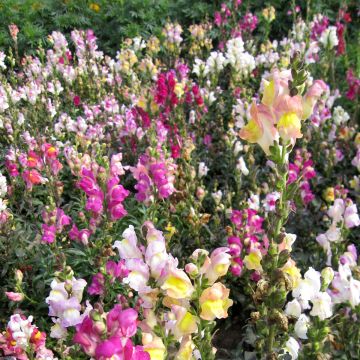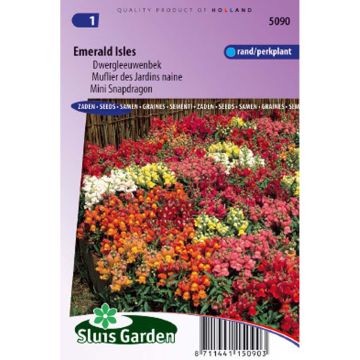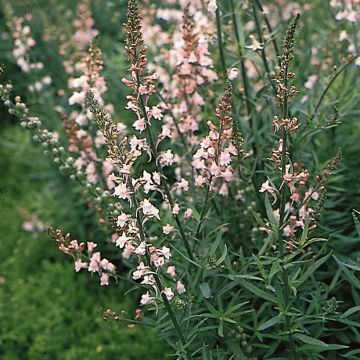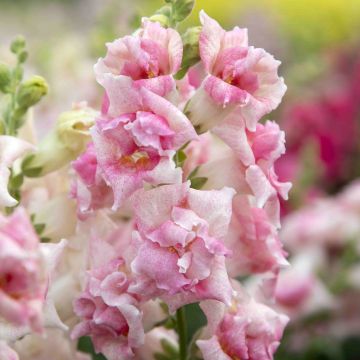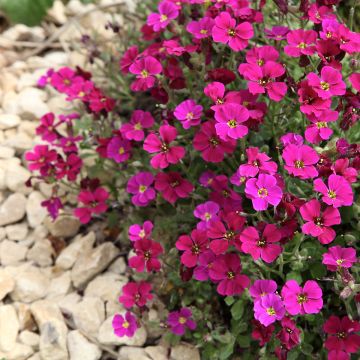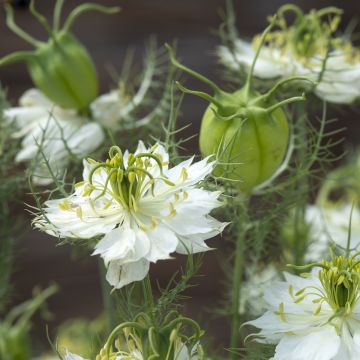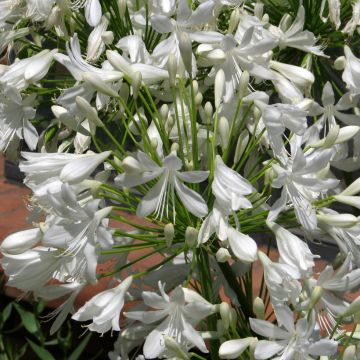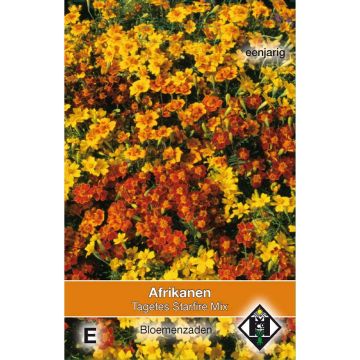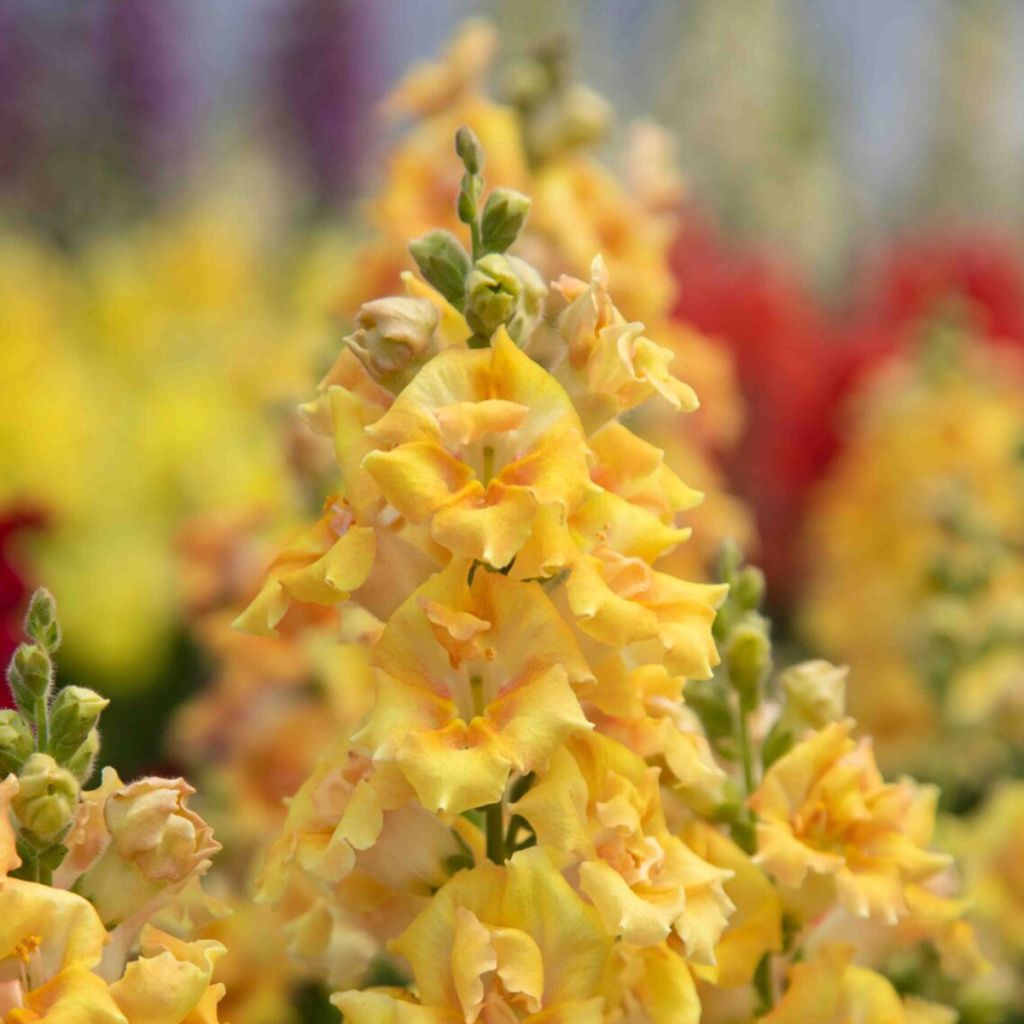

Antirrhinum majus Sweet Duet Citrus - Snapdragon
Antirrhinum majus Sweet Duet Citrus - Snapdragon
Antirrhinum x majus Sweet Duet Citrus
Snapdragon, Garden Snapdragon
This plant carries a 6 months recovery warranty
More information
We guarantee the quality of our plants for a full growing cycle, and will replace at our expense any plant that fails to recover under normal climatic and planting conditions.
Seed-only orders are dispatched by sealed envelope. The delivery charge for seed-only orders is €3.90.
Does this plant fit my garden?
Set up your Plantfit profile →
Description
Discover the 'Sweet Duet Citrus' snapdragon with its large semi-double flowers, yellow tinged with orange. They will brighten up your beds, borders, and containers. All summer long, they will delight you with their fragrance and attract pollinating insects. Whether annual or perennial depends on the climate and soil it grows in. Easy to grow, this compact and branching snapdragon thrives in light, fertile, well-drained soil and sunny exposure.
From the scrophulariaceae family, Antirrhinum majus was an essential plant in priests' gardens. Native to the western Mediterranean Basin, it grows among rocks on arid slopes in the south of France. The Sweet Duet series is characterised by almost double flowers of large size (between 4 and 5 cm long). This snapdragon forms a well-branched upright clump that reaches 30 to 40 cm in height and 25 to 30 cm in width. Its lemon yellow flowers, tinged with orange, bloom from May-June to September-October until the first frost. Fragrant, it also brings joy to bumblebees and other butterflies.
For a striking effect, plant densely, between 7 and 9 plants per square metre. Regularly remove faded flowers to prolong flowering. This snapdragon variety's yellow colour will pair beautifully with Envy Double Chartreuse Green Zinnias, Moody Blues Damask Nigellas with blue flowers, and, to lighten the composition, ornamental grasses like Piglet Chinese Fountain Grass.
Attention: These seeds are reserved for highly experienced gardeners who are used to sowing very fine seeds. These seeds are as fine as dust, barely visible to the naked eye.
Flowering
Foliage
Plant habit
Botanical data
Antirrhinum
x majus
Sweet Duet Citrus
Plantaginaceae (Scrophulariaceae)
Snapdragon, Garden Snapdragon
Cultivar or hybrid
Other Antirhinum - Snapdragon seeds
Planting and care
Sow your 'Sweet Duet Citrus' snapdragon seeds under cover between January and March in a tray on the surface of well-draining seed compost. Cover the seeds with a very thin layer of compost and keep it slightly moist. Place your tray at a temperature between 20 and 25°C. The seeds will germinate in 14 to 21 days. When the young plants are large enough to handle (2-leaf stage), transplant them into pots. Pinch the main stems to encourage branching. Plant them in their final position once the last frost has passed. Space them about 20 to 30 cm apart.
Another option is to sow in September and place the plants in pots under cover during the winter. You can then plant them out the following spring.
In mild climate regions, it is also possible to sow directly in the open ground in April-May. Thin out the rows to keep one plant every 20 to 30 cm. In this case, flowering will be later, allowing you to spread out the flowering period.
Snapdragons thrive in full sun in light, fertile, and well-drained soil. They are often grown as annuals, but they are perennials that, when well protected from the cold (mulching, well-drained soil), can survive the winter and start growing again as soon as the warm weather arrives.
Sowing period
Intended location
This item has not been reviewed yet - be the first to leave a review about it.
Flower seeds
Haven't found what you were looking for?
Hardiness is the lowest winter temperature a plant can endure without suffering serious damage or even dying. However, hardiness is affected by location (a sheltered area, such as a patio), protection (winter cover) and soil type (hardiness is improved by well-drained soil).

Photo Sharing Terms & Conditions
In order to encourage gardeners to interact and share their experiences, Promesse de fleurs offers various media enabling content to be uploaded onto its Site - in particular via the ‘Photo sharing’ module.
The User agrees to refrain from:
- Posting any content that is illegal, prejudicial, insulting, racist, inciteful to hatred, revisionist, contrary to public decency, that infringes on privacy or on the privacy rights of third parties, in particular the publicity rights of persons and goods, intellectual property rights, or the right to privacy.
- Submitting content on behalf of a third party;
- Impersonate the identity of a third party and/or publish any personal information about a third party;
In general, the User undertakes to refrain from any unethical behaviour.
All Content (in particular text, comments, files, images, photos, videos, creative works, etc.), which may be subject to property or intellectual property rights, image or other private rights, shall remain the property of the User, subject to the limited rights granted by the terms of the licence granted by Promesse de fleurs as stated below. Users are at liberty to publish or not to publish such Content on the Site, notably via the ‘Photo Sharing’ facility, and accept that this Content shall be made public and freely accessible, notably on the Internet.
Users further acknowledge, undertake to have ,and guarantee that they hold all necessary rights and permissions to publish such material on the Site, in particular with regard to the legislation in force pertaining to any privacy, property, intellectual property, image, or contractual rights, or rights of any other nature. By publishing such Content on the Site, Users acknowledge accepting full liability as publishers of the Content within the meaning of the law, and grant Promesse de fleurs, free of charge, an inclusive, worldwide licence for the said Content for the entire duration of its publication, including all reproduction, representation, up/downloading, displaying, performing, transmission, and storage rights.
Users also grant permission for their name to be linked to the Content and accept that this link may not always be made available.
By engaging in posting material, Users consent to their Content becoming automatically accessible on the Internet, in particular on other sites and/or blogs and/or web pages of the Promesse de fleurs site, including in particular social pages and the Promesse de fleurs catalogue.
Users may secure the removal of entrusted content free of charge by issuing a simple request via our contact form.

































